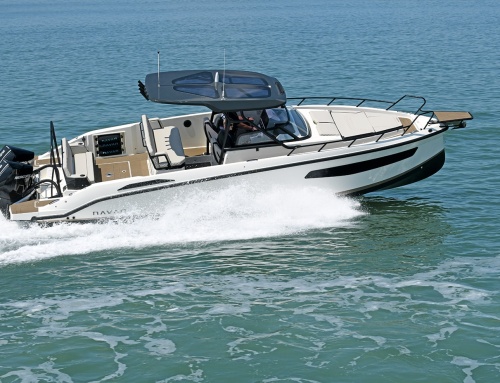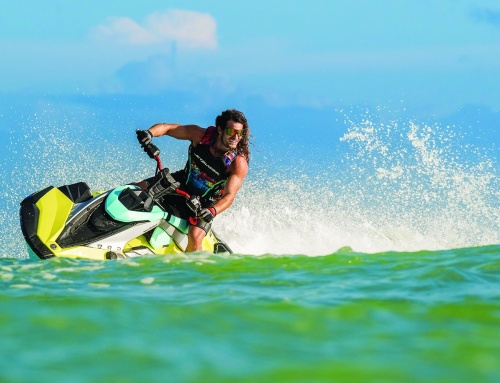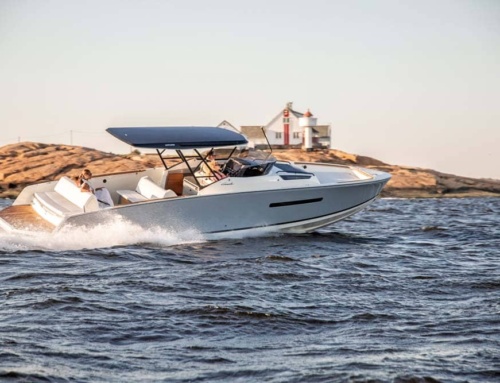A gentlemen’s cruiser
Launched at the Düsseldorf Boat Show in 2014, the hybrid Greenline 48 is often described as a gentleman’s cruiser, attracting both powerboaters and ex-sailors alike. Ten years on and with ten 48s selling every year, this Slovenian low-carbon boat has had a propulsion upgrade.
This low-carbon company lives up to its name with this clean green passage maker.
Available in two versions
The Greenline 48 is available in two versions, Flybridge and Coupe, and it runs on what Greenline describe as a super-displacement hull. The H-drive hybrid electric drive system has now been upgraded with a more powerful 24kW (32hp) ‘6G version’. Designed by J&J Design Studio, the resin-infused super-displacement hull is claimed to be able to exceed the theoretical hull (displacement) speed dictated by its waterline length:beam ratio. As a result, it has a wide range of cruising speeds from 10 to 20 knots and displays little in terms of transition to semi-displacement speeds. The design is very similar to the earlier Greenline 45, which this company says was its first boat to fully plane, so it would be fair to surmise that the 48 has what is termed a ‘fast semi-displacement hull’.

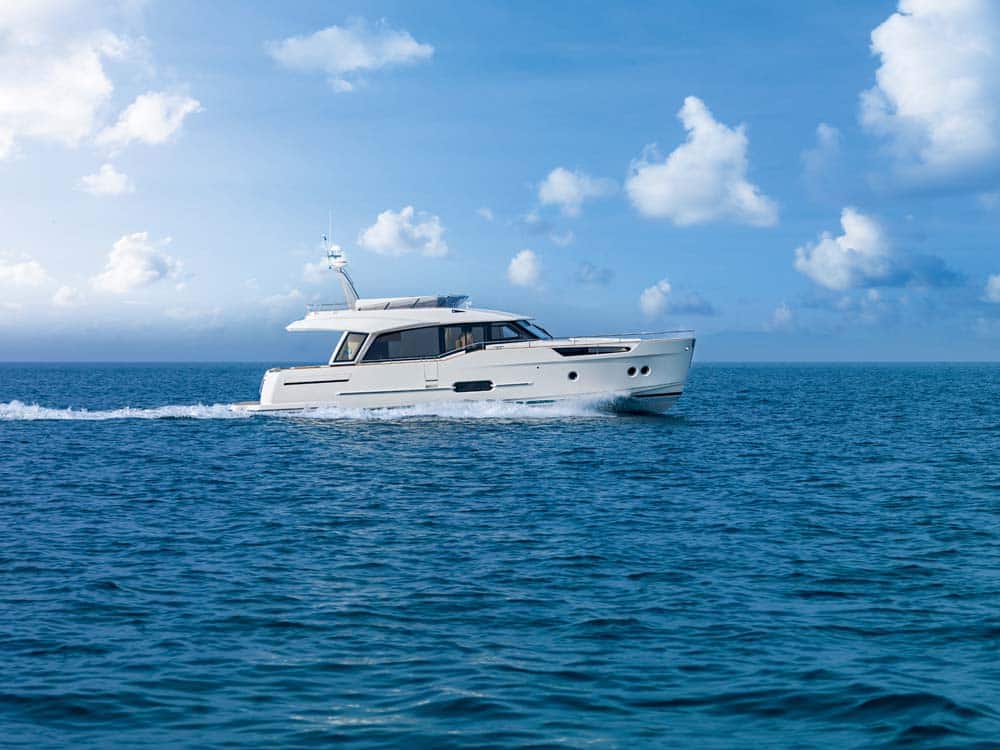
Engine Options
The H-drive is coupled in line with twin diesel engines. The options are now twin 250hp Volvos, twin 370hp Yanmars or, for those wanting more power, twin 480hp Cummins. The 250hp power option will give a top speed of around 18 knots, while twin 370s will take this boat to 25 knots or so, and the big Cummins engines will push it close to 30 knots in ideal conditions. For those wanting to go purely electric without the hybrid option, there is the choice of two 24kW Torqeedo electric motors. This will provide a 6-knot top speed with a 5-knot cruising speed, and a maximum range of 25nm, but given this boat’s cruising potential, hybrid makes better sense.

The flybridge can be fitted with a T-top with more solar panels.
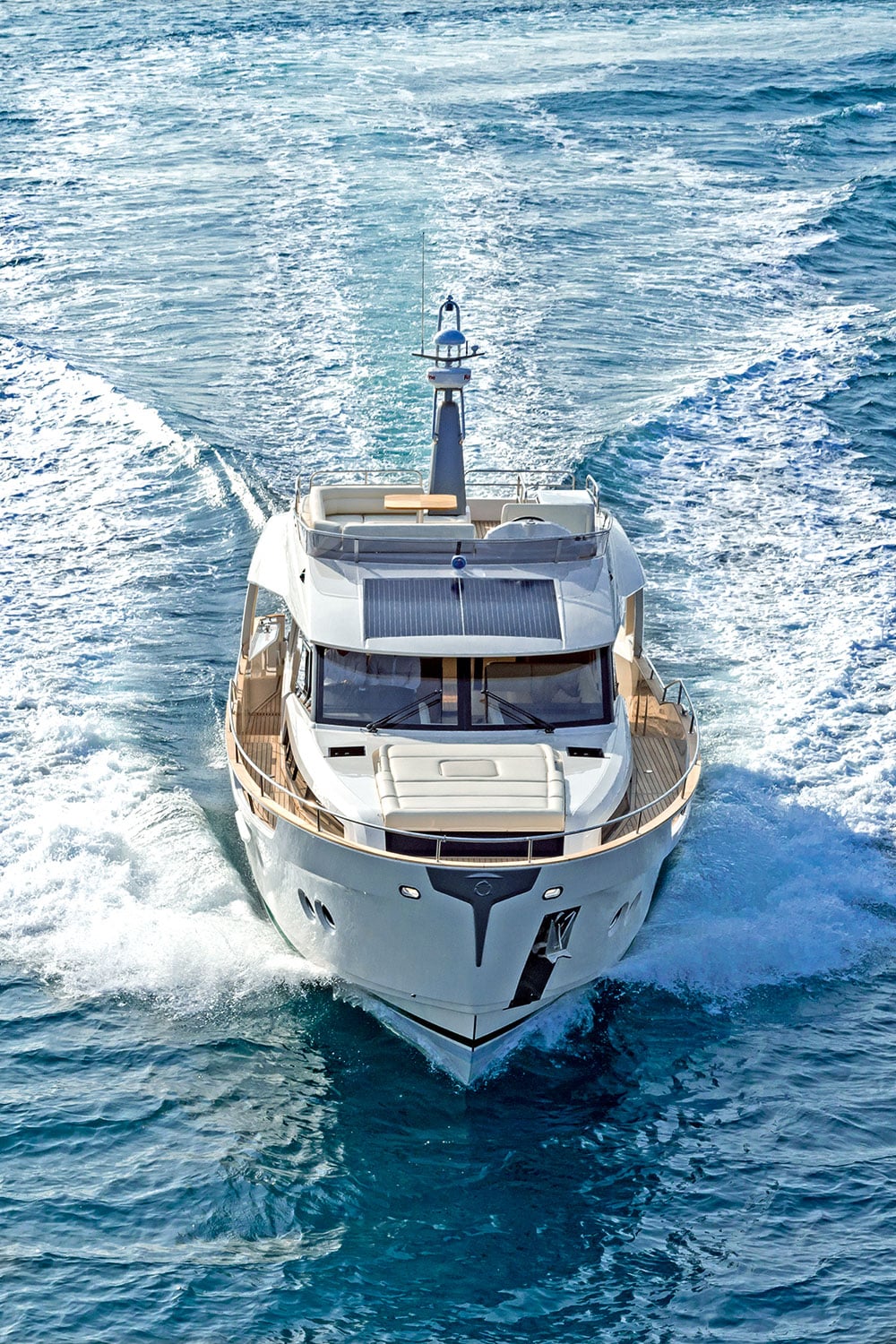

The H-drive concept
All engine options are shaft driven. The H-drive concept is what put Greenline on the map back in 2009 with the original Greenline 33, giving skippers the best of both worlds and the security of always being able to run on fossil fuel when the battery bank sinks too low. When running on diesel, the Greenline 48 can recharge the battery bank in two hours from deep discharge; alternatively, shore power can get them back in shape in a few hours more. Power comes from a 40kWh lithium polymer Torqeedo battery, which is actually made by BMW for their i3 car and is a common choice for quite a few small planing electric boats. You can opt for twin batteries, which would make sense if you intended to do some silent displacement cruising. All domestic needs on the boat are supplied by an inverter, which, feeding from the lithium DC battery, provides 230V AC current for the on-board appliances and air conditioning. Greenline have also fitted a six-panel forced-air-cooled solar array, which is capable of producing 1.8kWh in perfect conditions, so at displacement speed you could top up on passage, so to speak. If domestic consumption takes the bank down to its depth of discharge (DoD) level of 90%, one of the engines will run as an alternator to recharge the battery. It is claimed that even in cloudy conditions, a single battery bank can supply sufficient power for two days at anchor, and over three days in sunlight with power to spare. This totally negates the need for a generator, but if you are running on electric with air conditioning in moderate sunlight, your single-bank 25-mile range will be reduced.

This boat is perfect for al fresco dining.
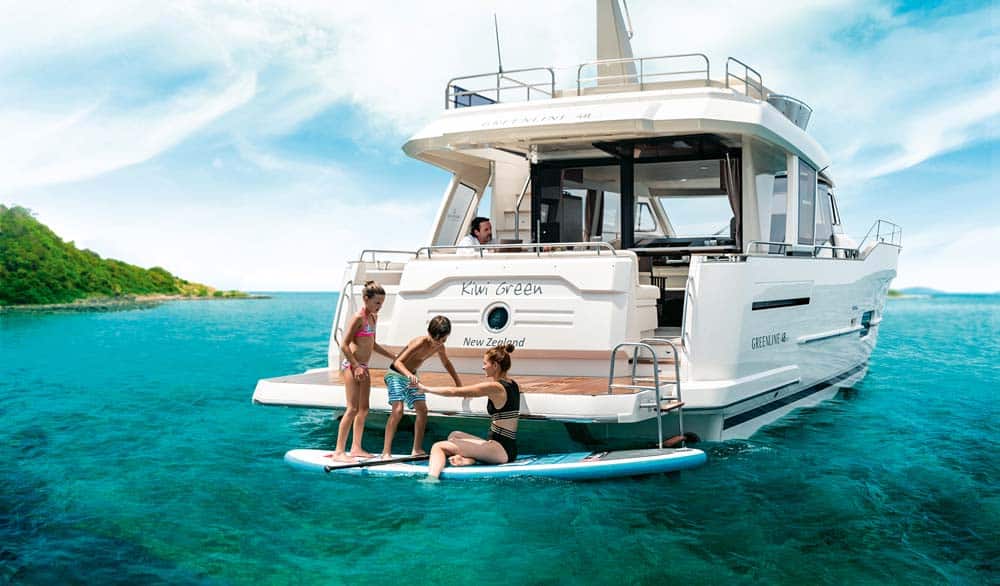
Layout of the Greenline 48
Deck access on the 48 is excellent. The side decks are very wide, and up to amidships the bulwarks are what can be considered pretty much full height, topped with a 6” high grab/fender rail. In designing this boat, J&J Design have not felt tempted to squeeze the side decks for the sake of internal space, which with a generous 4.8m beam makes good sense. In trawler yacht style, the aft sections of the side decks are covered with an overhang, which apart from providing a degree of weather protection also looks good. Going forward, from amidships on the starboard side you have a boarding gate, which is convenient for the side door next to the helm. You then take two steps up to the side door and the foredeck, where bulwark height reduces, but you have the benefit of tall guard rails. The flybridge has a double sunbed in the aft section and a large U-shaped dinette on the starboard side, which can convert to a super-large sunbed. On the port side, a fridge/griddle/ice box-equipped wet bar sits behind the double helm. If you want more front-facing seats, the back of the forward section of the dinette seating can be repositioned to face ahead, providing three extra forward seats next to the helm.

U-shaped galleys work well on passage.

The saloon design is super-sociable.
Entertainment onboard
The saloon is laid out with an aft galley set-up on the starboard side. This works particularly well, as with the aft saloon window folded up securely on its gas strut, you have a galley opening to the cockpit, suitably embellished with a fold-out breakfast bar. The galley is a traditional U-shape, and all the better for the generous amount of internal space. On the port side, there is further galley storage and a full-height fridge freezer. With the starboard-side concertina patio door open, you have in effect an open-plan connection with the saloon. A dinette sits on the port side, with a sofa opposite to starboard. What will strike you is the depth of the windows, as they come right down to seat and galley-top level, providing fantastic views out when seated – something not often found, even in boats of this size.

Window space is impressive.
Cabin arrangements
Below decks, there is a triple-cabin symmetrical layout, with two double guest cabins on either side, both with large en suites, one of which serves as a day heads. There is full standing headroom in the front sections of these cabins, as well as tall hanging lockers. The big forward master cabin is a corker – the headroom is superb and the expanse of windows covers 270 degrees, complemented by the foredeck bulwarks having cut-outs to let light into the beam windows. The bed is either a large double or a convertible scissor action bed, and the en suite is suitably large, complete with a separate shower section.

The port-side guest cabin is the mirror opposite of its starboard counterpart.

The guest cabins are identical in size/layout.
Low carbon boating
With the growing emphasis on green boating, Greenline’s continued success and input into the 48 prove that low-carbon boating is not just the reserve of small planing craft. Though you can have a fully electric Greenline, the security of hybrid power afloat speaks for itself, especially with the power needs of a 48ft boat. Going forward, I suspect we will see more innovation from this company. Due to the variety of options/specifications, pricing is on application.
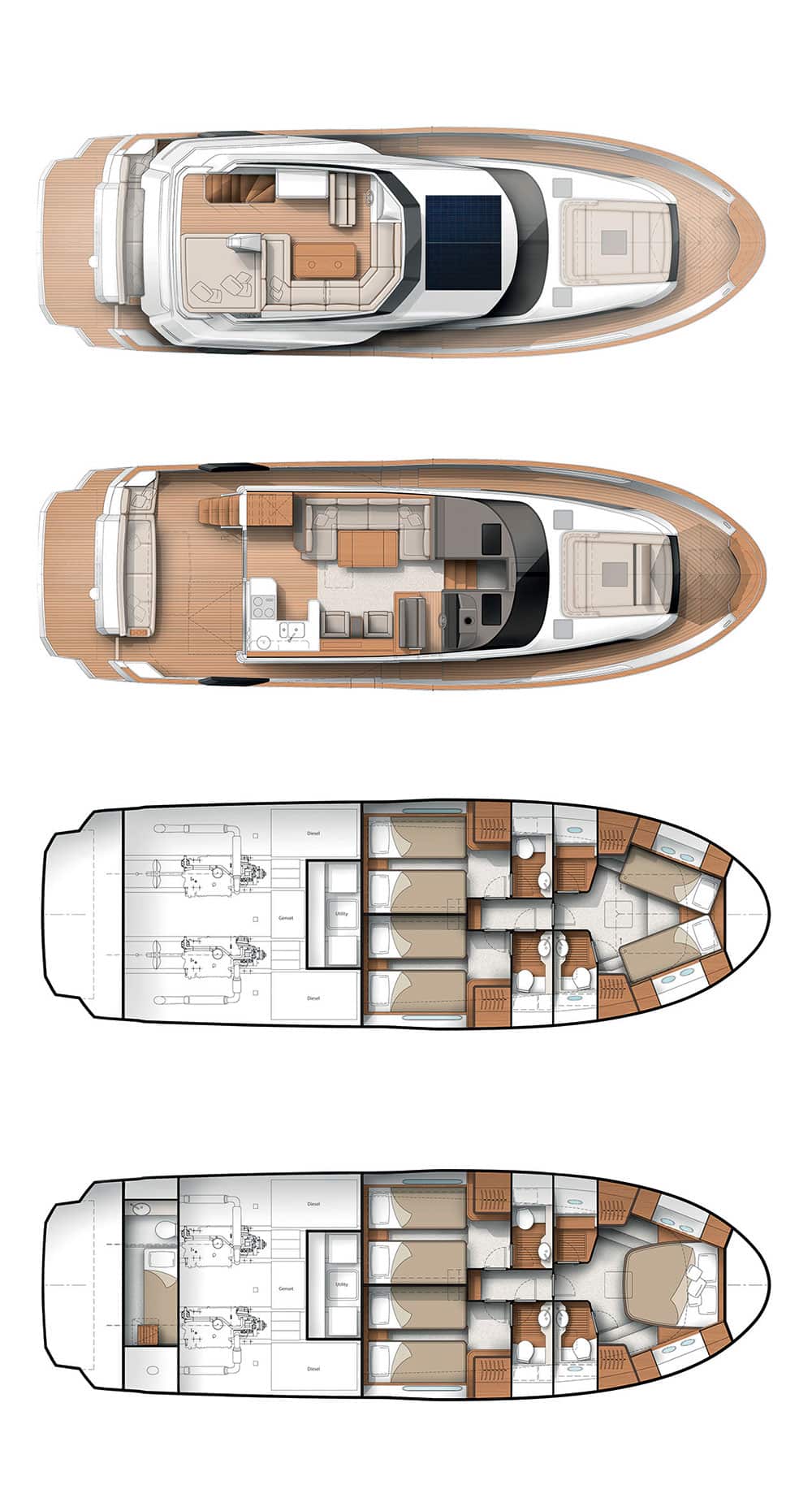
Specifications
- LOA: 14.99m
- Beam: 4.8m
- Displacement: 13.5 tonnes (dry)
- Fuel capacity: 1500L
- Berths: 6 + 2
- CE rating: B
- Diesel engine options: 2 x 250hp Volvo D4s, 2 x 370hp Yanmar 8LV370s, 2 x 480hp Cummins QSB6.7s
- Diesel top speeds: 18 knots twin 250hp, 25 knots twin 370hp, 30 knots twin 380hp – all figures relatively lightly loaded
- Range on diesel: 900nm at 7 knots to around 250nm at 20 knots with twin 480hp Cummins engines
- Electric top speed: 6 knots
- Electric range at 5 knots: Approx. 20nm on a single battery bank set-up (this can be doubled)


